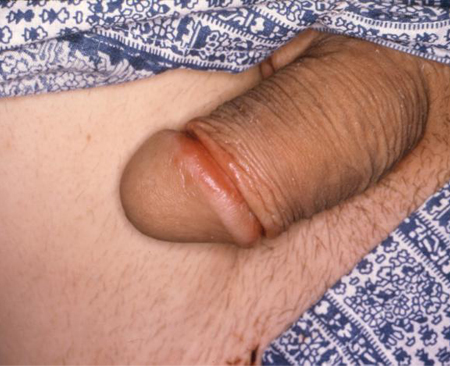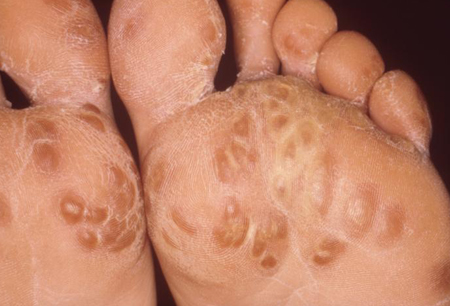Approach
As with many of the inflammatory arthritis syndromes, treatment is aimed at symptomatic relief and preventing or halting further joint damage.
Typical agents include non-steroidal anti-inflammatory drugs (NSAIDs), corticosteroids, and disease-modifying antirheumatic drugs (DMARDs).
NSAIDs
NSAIDs are often used as first-line therapy. No specific NSAID has been found to be superior to any other.[68] NSAIDs seem to have moderate efficacy for treating the clinical symptoms of both axial and peripheral arthralgias. However, there are a few prospective trials.
NSAIDs are used early in the disease course to improve functional status. Use of NSAIDs is limited by their renal and hepatic toxicities along with gastrointestinal bleeding complications. In small cross-over studies, indometacin was associated with more adverse effects than other NSAIDs (azapropazone, ketoprofen).[69][70]
Corticosteroids
Corticosteroids have greater effect on the peripheral joints in ReA; their effect on axial symptoms is limited.[4]
Corticosteroids may be used if symptoms are unresponsive to NSAIDs or during an acute flare. Intra-articular injections in monoarticular and oligoarticular forms may provide short-term relief, but systemic corticosteroids may be required if many joints are affected. Systemic corticosteroids can be helpful in treating ocular manifestations, such as iritis.
Topical corticosteroids can be used to treat skin involvement such as circinate balanitis and keratoderma blennorrhagicum.[Figure caption and citation for the preceding image starts]: Balanitis in a patient with reactive arthritis.Image provided by the CDC Public Health Image Library [Citation ends]. [Figure caption and citation for the preceding image starts]: Keratoderma blenorrhagia in a patient with reactive arthritis.Image provided by the CDC Public Health Image Library [Citation ends].
[Figure caption and citation for the preceding image starts]: Keratoderma blenorrhagia in a patient with reactive arthritis.Image provided by the CDC Public Health Image Library [Citation ends].
DMARDs
DMARDs are considered either when NSAIDs fail or when more aggressive treatments are needed to prevent radiographic joint destruction. In a prospective double-blind placebo-controlled trial, sulfasalazine improved response rates in patients with ReA unresponsive to NSAID therapy.[71] If the medication is not effective within 3 to 4 months, it should be discontinued.
Use of this content is subject to our disclaimer